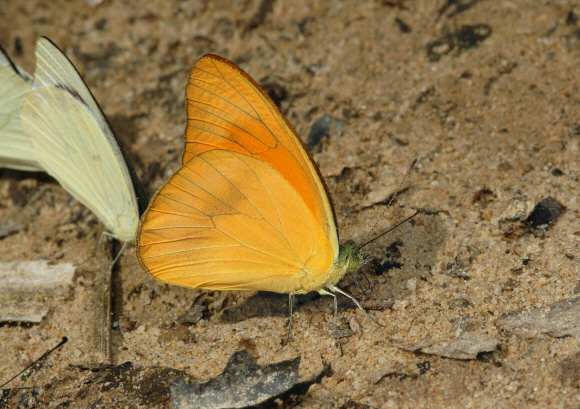
Introduction
Entomologists disagree about the classification of Appias. Some consider that the South American species drusilla, and the African sylvia and lasti belong in this genus, while others prefer to place them in Glutophrissa. Disregarding those, there are about 23-28 Appias species, comprising 7-8 species from the Australian region, and 16-20 from the Oriental region.
Appias nero is instantly distinguished from other Appias species by the deep orange colour on the upperside of both sexes. In freshly emerged specimens this is very vivid, but the colour fades to pale orange-yellow after a few days. Males have dark veins on the upperside forewings but are otherwise unmarked. Females differ in having broad dark borders and a dark subapical streak on the upperside.
This species is found from Sikkim to Singapore, and on the islands of Sumatra, Borneo, Sulawesi, Java and Palawan.
Habitats
Females are scarce, and seen mainly at elevations above 500m, so this is presumably where the insect breeds. Males are more commonly seen at lower altitudes, seeking minerals. They can often be seen in small groups along riverbanks during the peak March-June flight season, but are never as abundant as their relatives lyncida and paulina.
Lifecycle
I have no data regarding nero, but the larvae of other Appias species, e.g. lyncida and albina are green, with a pair of anal points. They feed on Capparis.
Adult behaviour
Males are usually seen in one’s and two’s, but occasionally congregate in groups of a dozen or so to imbibe mineralised moisture from damp sandbanks, normally in company with other Pierinae. They sometimes also settle on rocks and pebbles, and can be seen expelling droplets of moisture from the anus, using the recycled fluids to dissolve crystallised sodium. The fluids are then re-imbibed, and by repeating this process many times the butterflies are imbibe enough salts to replenish those lost during mating. The process is commonly called filter-feeding. In hazy or cool sunny conditions both sexes will bask on rocks, with wings held half open.
